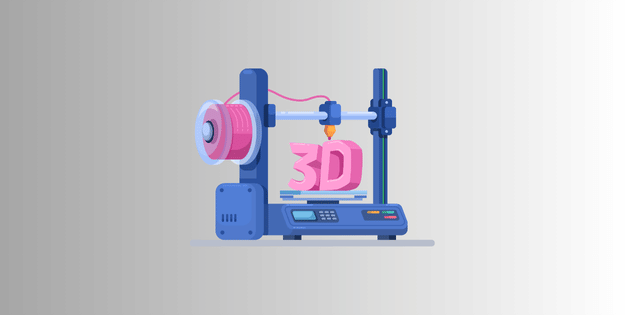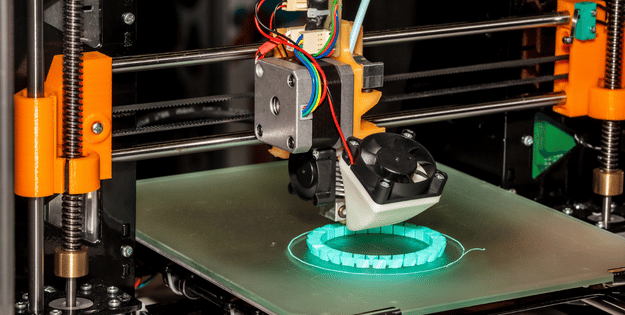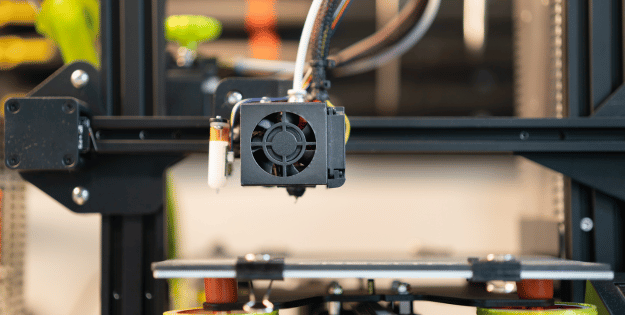All about 3D Printers
Look Into 3D Printers

Browse 3D Printers Reviews
Read the Top rated 3D Printers guides ★★★★★
-

Best 3D Printers for Every Maker
In the world of creativity and innovation, 3D printers have revolutionised how we bring ideas to life. Whether you're a hobbyist, a professional...
-

Best Budget 3D Printers
The world of 3D printing has exploded in popularity, making it more accessible than ever. For hobbyists, educators, and small businesses, finding a...
-

Best DIY 3D Printer Kits
The world of 3D printing has exploded in recent years, offering endless possibilities for creativity and innovation. For those eager to dive into...
Top Selling 3D Printers
view TOP selling
By clicking a retailer link, you agree to third-party cookies tracking your activity. If you make a purchase, LookInto.co.uk will receive an affiliate commission, supporting our mission to be the UK’s number-one place for product information.
All About 3D Printers
In recent years, 3D printers have revolutionised the way we think about manufacturing and creativity. These remarkable machines transform digital designs into tangible objects, opening up endless possibilities for industries ranging from healthcare to fashion. As costs decrease and technology advances, more individuals and businesses are discovering the advantages of 3D printing.
This innovative process not only accelerates production but also encourages customisation and sustainability. From prototypes to final products, 3D printing is reshaping traditional manufacturing methods. Understanding the potential of this technology is essential for anyone looking to stay ahead in a rapidly evolving landscape.
Key Takeaways
- 3D printers function by using additive manufacturing techniques to create physical objects from digital designs, significantly impacting various industries.
- The types of 3D printing technologies include FDM, SLA, and SLS, each offering unique advantages tailored to specific applications.
- Key benefits of 3D printing include cost-effectiveness, design flexibility, and accelerated prototyping, making it a valuable tool for businesses and creators.
- When selecting a 3D printer, important factors to consider include budget, print quality, and printing speed to ensure it meets specific needs.
- Common applications of 3D printing span industrial, medical, and educational sectors, highlighting its versatility and innovative potential.
- Challenges such as material constraints, technical knowledge requirements, and regulatory issues must be navigated for successful adoption of 3D printing technologies.
Overview of 3D Printers
3D printers convert digital designs into tangible objects, significantly impacting various industries. Understanding their functionality and types reveals their potential in modern manufacturing.
Definition and Functionality
3D printers use additive manufacturing techniques to create items layer by layer. They interpret computer-generated models, allowing users to produce intricate designs with precision and efficiency.
Types of 3D Printing Technologies
3D printers employ several technologies, including Fused Deposition Modelling (FDM), Stereolithography (SLA), and Selective Laser Sintering (SLS). Each technology serves distinct purposes and materials, catering to varying industry needs.
Benefits of 3D Printing
3D printers offer several advantages across various industries, enhancing production processes and creative capabilities.
Cost-effectiveness
3D printers reduce material waste through their additive manufacturing approach. Lower production costs emerge from decreased need for complex machinery and fewer resources. Custom manufacturing eliminates the expenses associated with large-scale production, providing significant savings for small businesses and individual creators.
Design Flexibility
3D printers accommodate complex designs that traditional manufacturing methods can’t achieve. Custom shapes and intricate details become feasible, enabling designers to explore innovative ideas. The adaptability of 3D printing facilitates on-demand production, allowing for rapid changes in design without extensive retooling.
Rapid Prototyping
3D printers expedite the prototyping process, significantly reducing lead times. Designers can create functional prototypes in a matter of hours instead of weeks, promoting quicker iterations. This speed enhances the product development lifecycle, enabling instant feedback and faster route to market.
Key Considerations When Choosing a 3D Printer
Consider essential factors for selecting the right 3D printer. Awareness of budget, quality, and efficiency significantly influences the decision-making process.
Budget and Cost
Budget impacts the choice of 3D printers. Entry-level models start around £200, while high-end machines can exceed £5,000. It’s crucial to consider ongoing expenses, such as filament and maintenance.
Print Quality and Resolution
Print quality relies on resolution specifications. Higher resolution typically yields finer details and smoother surfaces. Many 3D printers feature a resolution range between 50 to 300 microns.
Printing Speed and Efficiency
Printing speed is measured in millimetres per second (mm/s). Common speeds for 3D printers range from 30 to 150 mm/s. Higher efficiency reduces project lead times and enhances productivity.
Common Applications of 3D Printing
3D printers serve numerous industries, showcasing their versatility and innovative potential. Here are some key applications across various fields.
Industrial Uses
3D printers streamline manufacturing processes by enabling rapid prototyping and producing complex parts. Industries like aerospace and automotive leverage this technology to create lightweight components that enhance performance and reduce costs.
Medical Applications
3D printers revolutionise healthcare by creating patient-specific implants, prosthetics, and anatomical models. Surgeons utilise these models for pre-operative planning, increasing precision and improving surgical outcomes.
Educational Purposes
3D printers enhance learning experiences in educational settings by allowing students to design and fabricate tangible objects. This hands-on approach fosters creativity and deepens understanding in fields like engineering, art, and science.
Challenges and Limitations
3D printers face several challenges that may hinder their widespread adoption. Understanding these limitations helps in navigating the complexities of this technology.
Material Constraints
Material availability impacts the capabilities of 3D printers. Certain materials, like metals or high-temperature thermoplastics, require specialised printers or processes. Accessibility to these materials can limit design options and complicate production workflows.
Technical Knowledge Requirements
Operating and maintaining 3D printers necessitates technical expertise. Users must understand software for design, slicing, and troubleshooting mechanical issues. Insufficient technical knowledge may lead to suboptimal results or increased downtime.
Regulatory and Legal Issues
Regulatory compliance poses a challenge for 3D printers. Manufacturers must navigate intellectual property laws and safety regulations. Failure to adhere to these regulations can result in legal complications, stifling innovation in the industry.
Future Trends in 3D Printing
3D printers continue to evolve, showcasing significant trends that drive the industry forward. Key areas of focus include advancements in technology and environmentally sustainable practices.
Advancements in Technology
Advancements in 3D printer technology enhance efficiency and expand capabilities. New materials, such as bio-inks and composite filaments, improve the range of applications. Innovations in software enable intuitive design, promoting accessibility for users at all skill levels.
Environmentally Sustainable Practices
Environmentally sustainable practices are gaining traction in 3D printing. Manufacturers increasingly prioritise recyclability and biodegradable materials. Sustainable production processes reduce waste and energy consumption, aligning with global efforts towards carbon neutrality.
Conclusion
3D printing stands at the forefront of innovation across various sectors. Its ability to revolutionise production methods and enhance customisation makes it an invaluable tool for businesses and individuals alike. As the technology continues to evolve so do the possibilities for its applications in fields ranging from healthcare to education.
The commitment to sustainability and the development of new materials will further propel the industry forward. By addressing existing challenges and embracing advancements in technology those who adopt 3D printing can gain a competitive edge and contribute to a more sustainable future. The journey of 3D printing is just beginning and its impact will only grow in the years to come.
Frequently Asked Questions
What industries benefit from 3D printing?
Various industries benefit from 3D printing, including manufacturing, healthcare, education, and aerospace. It enables rapid prototyping, customisation, and production of complex parts, helping these sectors improve efficiency, reduce costs, and innovate.
What types of 3D printers are available?
The main types of 3D printers include Fused Deposition Modelling (FDM), Stereolithography (SLA), and Selective Laser Sintering (SLS). Each type has distinct applications and advantages, catering to different production needs and materials.
How does 3D printing promote sustainability?
3D printing promotes sustainability by reducing waste through efficient material usage, enabling the use of recyclable and biodegradable materials, and streamlining production processes. This aligns with efforts to decrease carbon footprints and environmental impact.
What are the key factors when choosing a 3D printer?
When choosing a 3D printer, consider factors like budget, print quality, resolution, printing speed, and material compatibility. Assessing your specific needs will help you select the best machine for your applications.
What challenges does 3D printing face?
Challenges in 3D printing include material constraints, the need for technical skills, and navigating regulatory issues. Addressing these obstacles is essential for broader adoption and innovation within the industry.
What are the future trends in 3D printing?
Future trends include advancements in materials, software, and technology that enhance efficiency and accessibility. Increased focus on sustainability and potential applications in new fields will continue to shape the future of 3D printing.




